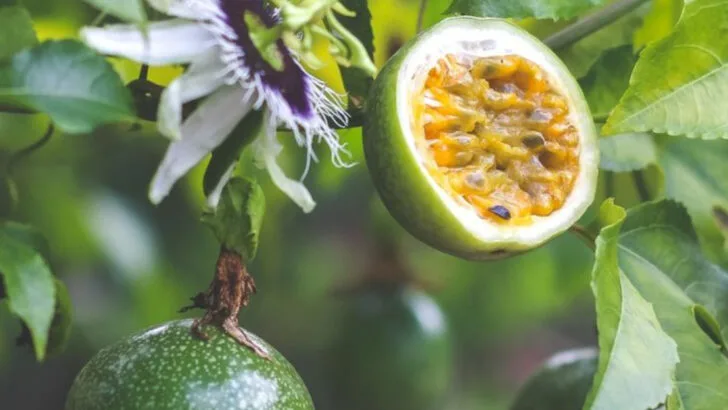If your garden is short on space but big on ambition, it’s time to start thinking vertically. Climbing edible plants aren’t just practical—they’re downright transformative. With just a bit of structure, like a fence, trellis, or balcony railing, you can turn unused vertical space into a lush wall of food that’s as beautiful as it is productive.
From classic favorites like pole beans, peas, and cucumbers, to more surprising climbers like Malabar spinach, passionfruit, or even climbing nasturtiums, these edible plants thrive when they’re given something to grab onto. The result? A living, growing curtain of greenery that offers both privacy and harvests—sometimes daily.
In this guide, you’ll discover 17 climbing edibles that are easy to grow, visually striking, and ideal for small gardens, balconies, or anyone who loves a little vertical drama with their dinner. Whether you’re dreaming of a green fence or simply want more yield in less space, these plants are ready to climb.
Scarlet Runner Beans
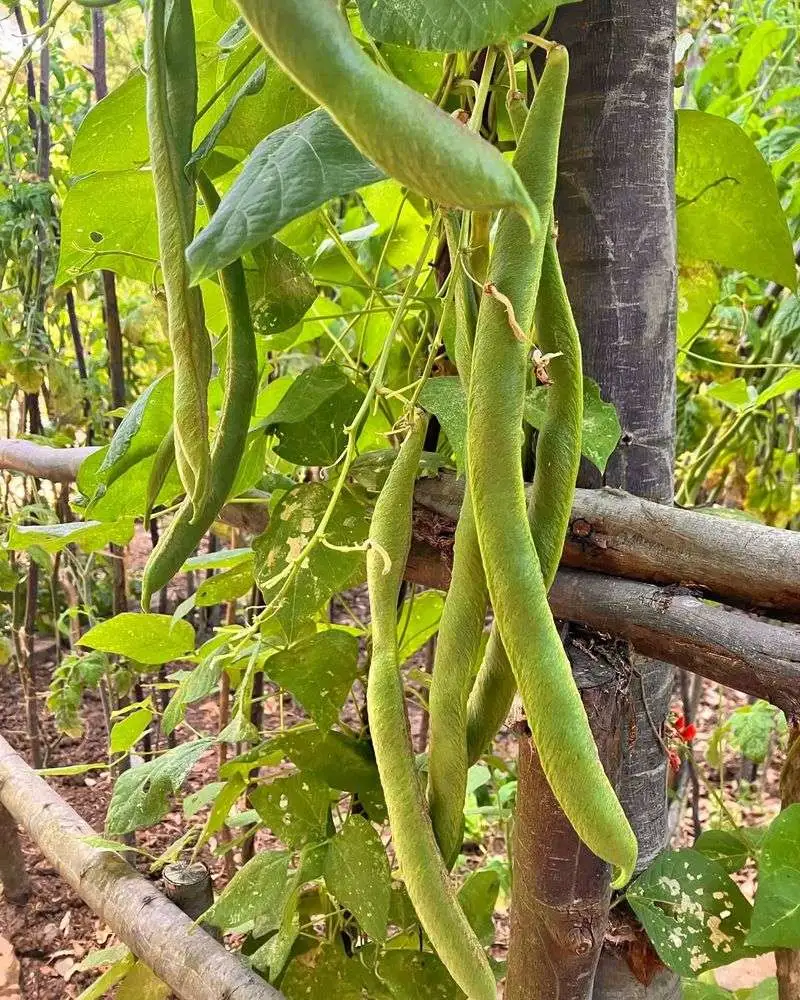
Scarlet runner beans are more than just a pretty face in the garden. These vigorous climbers boast scarlet flowers that attract hummingbirds, making them a visual delight. The beans themselves are not only edible but also rich in protein, providing a nutritious addition to meals. Ideal for fences, the vines can reach up to 12 feet, creating a lush curtain of greenery. In colder climates, they grow as annuals but can be perennial in milder regions. With their dual purpose of beauty and nutrition, they enhance any vertical gardening space significantly.
Cucamelons
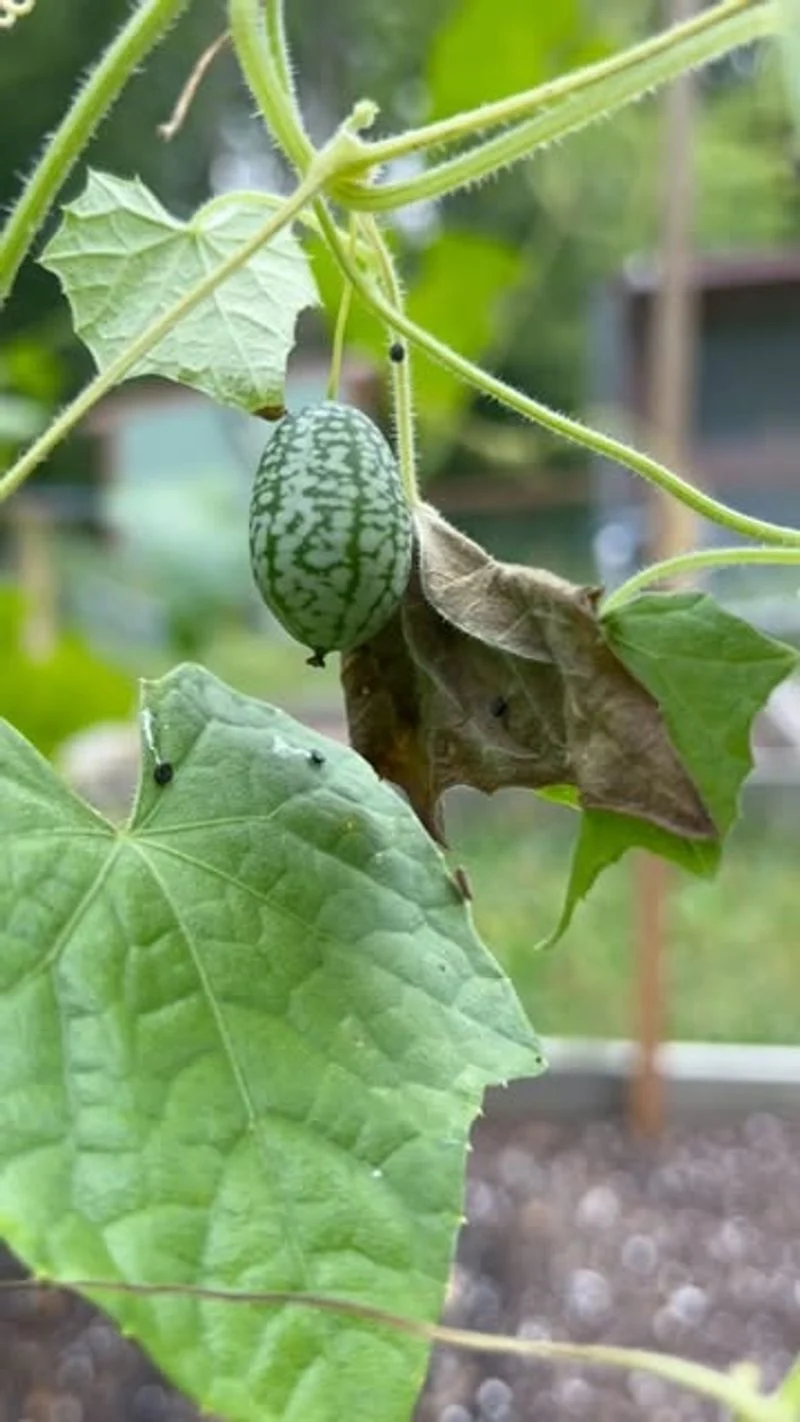
Cucamelons, often referred to as “mouse melons,” are charming climbers that offer a unique taste experience. Resembling miniature watermelons, these grape-sized fruits have a refreshing cucumber flavor with a hint of citrus. The vines are perfect for growing on fences, reaching up to 10 feet in height. Not only are they visually appealing, but they also require minimal care once established. Originating from Central America, cucamelons are drought-tolerant and can thrive in various climates. Their novelty and ease of growth make them a favorite among gardeners looking for something different.
Malabar Spinach
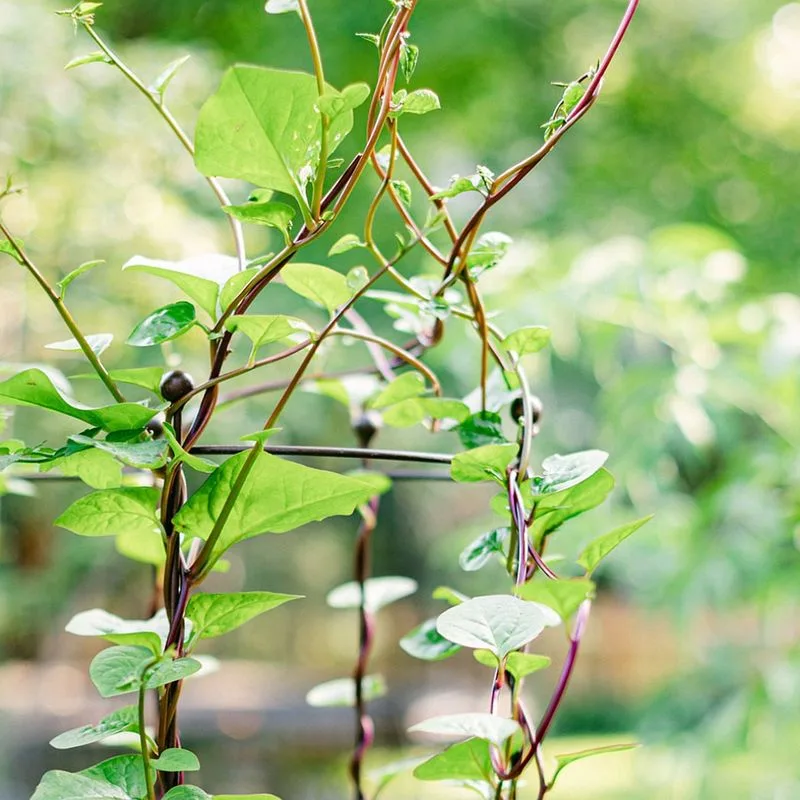
Malabar spinach isn’t your typical spinach. This heat-loving vine thrives in warm climates where traditional spinach might wither. Its thick, succulent leaves are perfect in salads or stir-fries, offering a nutritional punch. The striking purple stems and flowers add an exotic touch to fences and trellises. Growing quickly, it can cover an area with ease, providing both shade and sustenance. Unlike true spinach, Malabar spinach thrives in the summer heat, making it an outstanding choice for gardeners in warmer zones looking for a spinach alternative.
Kiwi Vines
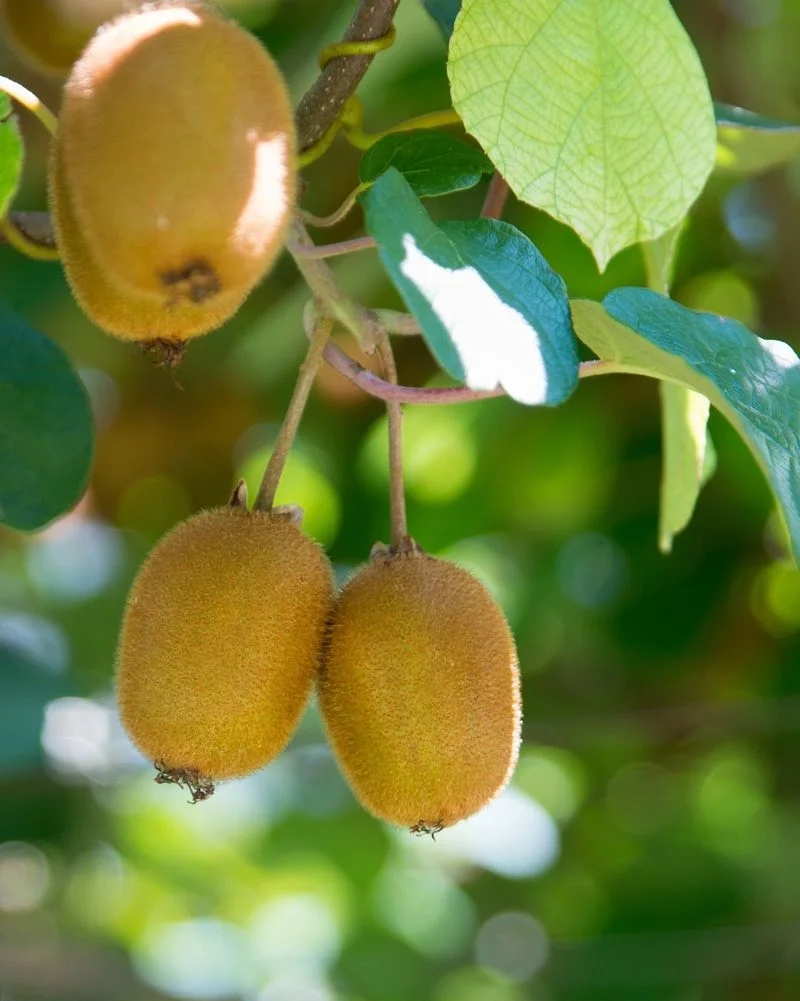
Kiwi vines transform ordinary fences into fruitful marvels. These vigorous plants need sturdy support and plenty of sunlight to produce their delicious, nutrient-rich fruits. Known for their fuzzy brown skin and vibrant green flesh, kiwis are packed with vitamins C and K. Typically, both male and female plants are required for pollination and fruit production. Originating from China, kiwis have become a popular garden favorite in many temperate regions. Their unique taste makes them a delightful addition to homemade desserts and fresh fruit salads.
Hops
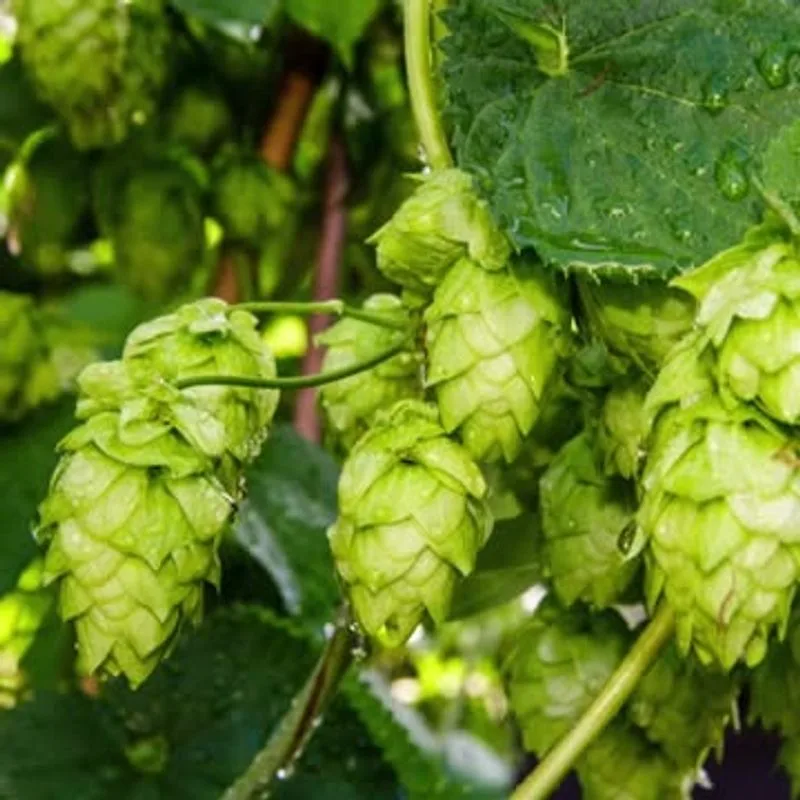
For those interested in brewing, hops are an exciting addition to the fence line. These vigorous climbers can reach impressive heights, offering privacy along with their aromatic flowers. The cone-like flowers are essential for brewing beer, but they also make a lovely tea. Hops thrive in well-draining soil and require plenty of sun. Originating from Europe, these plants have a long history in both brewing and herbal medicine. Their rapid growth and lush foliage also make them an excellent choice for creating natural screens in the garden.
Passionfruit
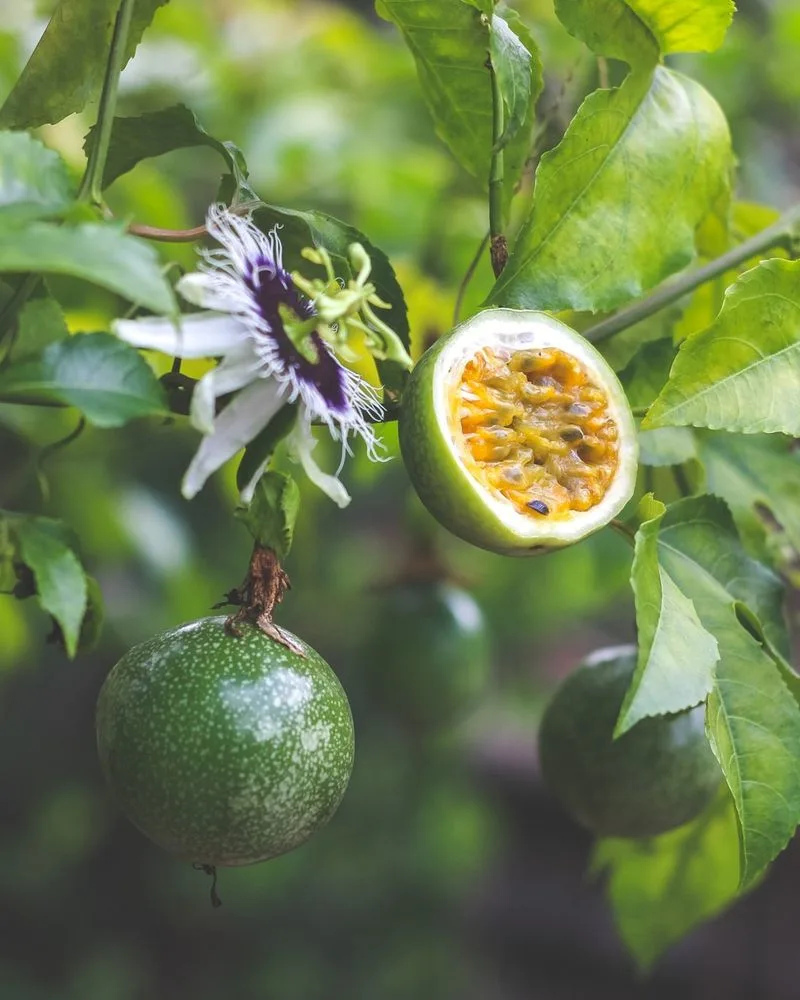
Passionfruit vines bring an exotic flair to fences, with their striking purple and white flowers followed by sweet, aromatic fruits. These climbers prefer warm, frost-free climates and well-drained soil. Passionfruit is a powerhouse of flavor and nutrition, often used in juices, desserts, and sauces. The vines can grow aggressively, so regular pruning is recommended to keep them in check. Native to South America, they have captured the hearts of gardeners worldwide. Their ability to transform bland spaces into tropical paradises is unmatched in the gardening world.
Sweet Peas
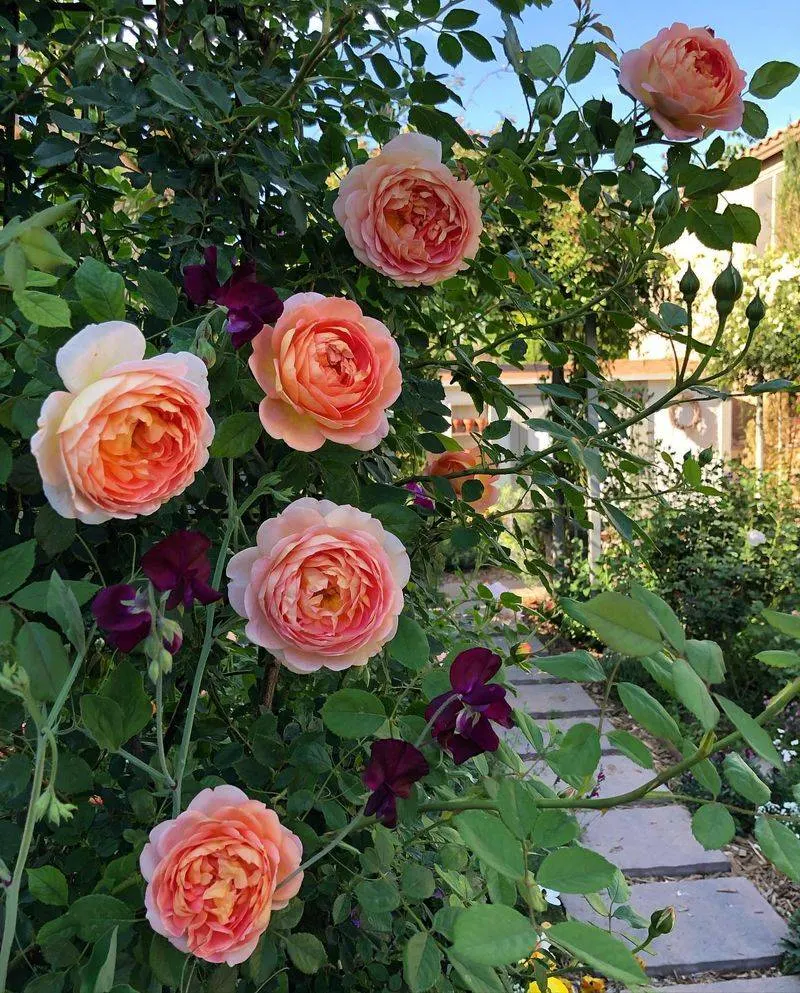
Though not traditionally edible, sweet pea flowers add a burst of color and fragrance to any fence. While their beauty is unmatched, caution is needed as the seeds are toxic if ingested. Sweet peas thrive in cooler climates and prefer well-draining soil. They require support to climb, often reaching heights of 6 to 8 feet. The intoxicating fragrance of their blooms makes them a favorite for gardeners looking to add a sensory experience to their garden. Despite their name, sweet peas are best enjoyed visually rather than as a culinary delight.
Grapevines
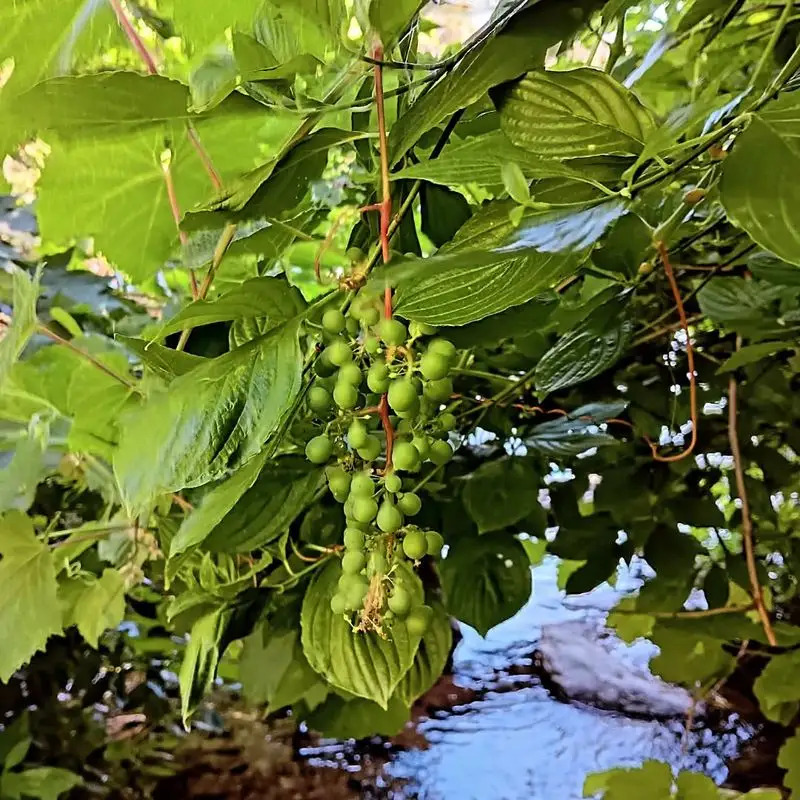
Grapevines possess a timeless elegance, draping fences with their verdant leaves and juicy fruits. These perennial climbers are versatile, thriving in various climates and offering a bounty of grapes once mature. Perfect for making homemade wines, jams, or simply enjoying fresh. They require good drainage and sunny spots to flourish, making them ideal for sunny, south-facing fences. Grapevines not only provide delicious fruit but also contribute to a picturesque garden setting. Their long history in agriculture speaks to their enduring appeal and versatility in the garden.
Pole Beans
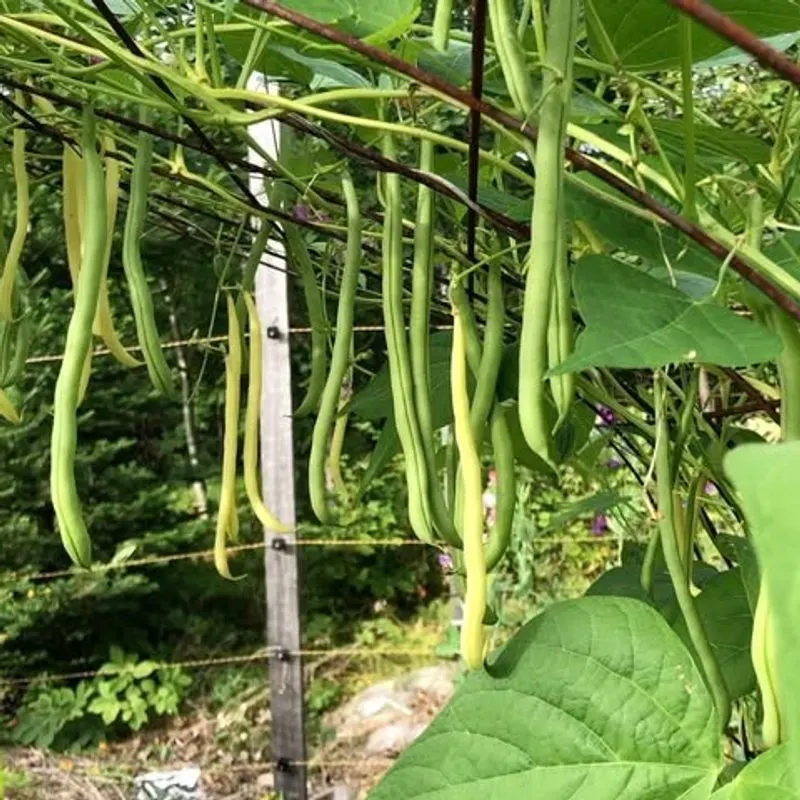
For a classic garden choice, pole beans offer both utility and beauty. These vines are prolific producers, with long pods that hang like verdant ornaments from their stems. Easy to grow, they require minimal care once established, making them perfect for busy gardeners. They thrive in sunny spots with well-draining soil. Originating from Central and South America, pole beans bring a touch of history to the garden. Their vertical growth makes them ideal for maximizing space, especially in smaller gardens, while providing a continuous harvest throughout the growing season.
Blackberries

Blackberries offer the dual benefit of ornamental beauty and delicious fruit. Their arching canes, adorned with juicy berries, create a picturesque scene on fences. These vigorous growers can be thorny, so care is needed when harvesting. They thrive in full sun and well-drained soil. Known for their antioxidant-rich fruits, blackberries are a favorite for making jams, desserts, and fresh salads. Originating from Europe, they have become a staple in gardens worldwide. Their robust nature makes them suitable for gardeners who desire both aesthetics and a fruitful harvest.
Bitter Melon

Bitter melon may not win any beauty contests, but its unique appearance and health benefits are undeniable. The vine is easy to grow, especially in warm climates, and produces fruits that are often used in Asian cuisines. Prized for its medicinal properties, bitter melon is believed to help regulate blood sugar levels. The climbing habit of this plant makes it perfect for fences, providing both shade and produce. While the taste might be an acquired one, the nutritional benefits certainly make it worth considering for health-conscious gardeners.
Raspberries

Raspberry vines are a delightful addition to any garden fence, offering both visual appeal and a bounty of sweet berries. Their canes can be trained to climb, creating a living wall of green and red. These plants prefer well-drained soil and full sun to produce their best fruit. Known for their rich flavor, raspberries are a popular choice for homemade jams, desserts, and fresh eating. Originating from Europe and Northern Asia, they have a long history of cultivation. The combination of beauty and productivity makes them a must-have for backyard growers.
Chayote

Chayote, also known as vegetable pear, is a versatile and productive vine perfect for vertical gardening. Native to Central America, this vine produces crisp, mild-flavored fruits used in a variety of dishes. Growing rapidly, it can cover fences with its lush foliage and unique tendrils. Chayote prefers warm climates and well-draining soil, making it ideal for subtropical regions. Its ability to produce abundant yields with minimal care makes it a favorite among gardeners who appreciate both form and function. The vine’s rapid growth can transform unremarkable spaces into flourishing green walls.
Cherry Tomatoes

Cherry tomatoes are a garden staple, loved for their sweet flavor and ease of growth. As a climbing plant, they can be trained to grow along fences, creating a cascade of vibrant red fruits. These tomatoes thrive in sunny spots with good drainage. Known for their versatility, they can be enjoyed fresh, in salads, or roasted. Originating from South America, cherry tomatoes have become a favorite worldwide. Their compact growth habit and continuous harvest make them ideal for small spaces, offering both aesthetic appeal and a culinary treat.
Hyacinth Beans

Hyacinth beans are not only striking with their purple flowers and pods but also serve as a unique culinary ingredient. These vigorous climbers are perfect for adding color and texture to fences. While the pods are edible when cooked properly, care should be taken as raw beans can be toxic. The plant thrives in warm climates and requires a sunny position to flourish. Originating from Africa, hyacinth beans have been cultivated for centuries. They offer both ornamental value and the added bonus of edible beans, making them a versatile choice for gardeners.
Akebia

Akebia, known for its delightful chocolate-scented flowers, adds an exotic touch to any vertical space. This semi-evergreen climber produces unique elongated fruits, which are edible but often enjoyed more for their ornamental value. Akebia thrives in well-drained soil and can grow in partial shade, making it versatile for various garden settings. Native to East Asia, it has slowly gained popularity among gardeners seeking unusual plants. Its rapid growth and captivating scent provide a sensory experience that sets it apart from more common climbing edibles.

